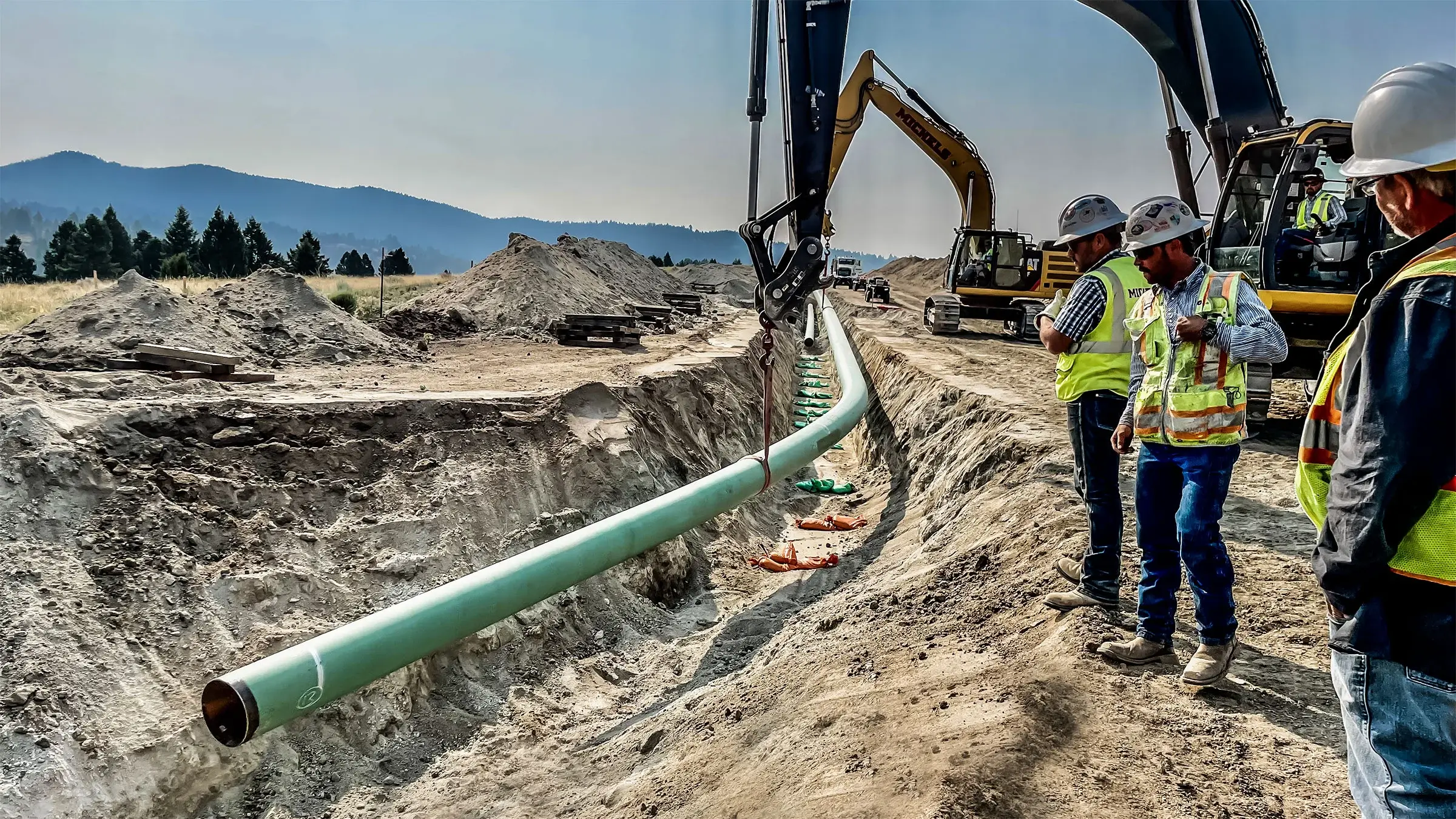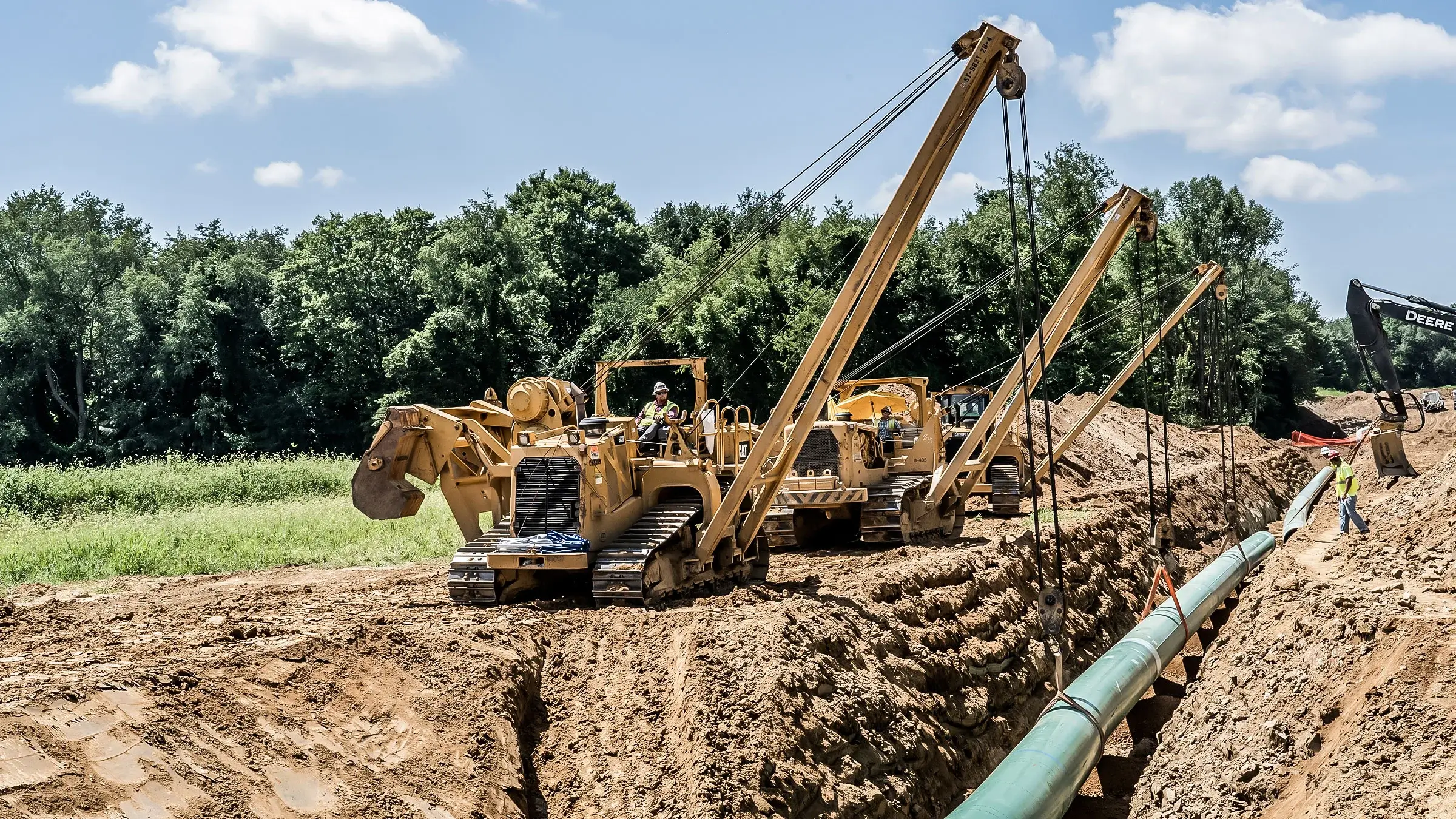Boost Efficiency With Strategic Creek Pipe pipeline construction Methods
Wiki Article
Understanding the Essentials of Pipes Installation: What You Required to Learn About the Refine
Appropriate pipe installation is necessary for any pipes system. It calls for mindful consideration of various variables, consisting of material option and adherence to local policies. A tactical format can avoid concerns like pressure loss, while the right devices ensure effective signing up with methods. Also experienced installers can make usual errors. Understanding these fundamentals can result in a more effective and sturdy system, motivating a more detailed look at the crucial elements entailed in the procedure.Picking the Right Products for Pipe Installation
When thinking about pipe installation, the option of suitable products is necessary to making sure longevity and performance. Various materials are offered, each offering one-of-a-kind advantages and factors to consider. As an example, PVC pipes are lightweight, resistant to deterioration, and affordable, making them optimal for household pipes. Conversely, copper pipelines, recognized for their long life and capability to withstand high temperatures, are commonly preferred for heating systems.Additionally, galvanized steel pipes supply stamina and toughness, suitable for sturdy applications, although they are at risk to corrosion over time.For underground installments, polyethylene pipes are favored because of their flexibility and resistance to tension breaking. Correct material selection depends on the certain demands of the job, including stress scores, temperature level variations, and the chemical nature of the fluids being moved - Creek Pipe trenching services. Eventually, notified choices regarding pipe products add substantially to the total success and longevity of pipes systemsRecognizing Local Structure Codes and Regulations
Just how can understanding local building ordinance and laws effect pipe installation? Experience with these codes is vital for ensuring that pipe installments are safe, compliant, and reliable. Regional building ordinance describe certain demands regarding materials, installation methods, and precaution, which need to be stuck to to avoid prospective lawful concerns and costly fines.Failure to abide can result in inspections being stopped working, delays in project conclusion, or even mandated elimination of incorrectly mounted pipelines. On top of that, understanding zoning legislations and regulations can influence the kind of products enabled, as well as the techniques made use of for installation.Contractors and house owners alike should invest time in reviewing regional guidelines prior to starting any kind of installation job. This aggressive method not only promotes safety yet likewise boosts the general high quality and longevity of the plumbing system, inevitably promoting lasting functionality and contentment.Planning Your Pipe Layout and Layout
Correct planning of pipe layout and style is essential for attaining an effective plumbing system. This process begins with assessing the certain requirements of the area, thinking about the area of fixtures and home appliances. Precise measurements assure that pipes are appropriately transmitted, reducing bends and turns that can lead to push loss.Consideration of the circulation rates and the types of materials used is crucial, as various materials have varying durability and compatibility with plumbing systems. Additionally, the designer needs to represent future developments or modifications to the design, allowing for versatility in instance of renovations.Efficient water drainage and ventilation are also considerable components of the layout, as they avoid blockages and ensure proper waste removal. Cooperation with regional structure codes ensures conformity and security, which is paramount in any type of pipes installation project.Essential Tools and Tools for Installation
Successful pipe installation depends upon having the right tools and equipment available. Vital tools consist of pipe cutters for tidy cuts, wrenches for tightening up fittings, and pliers for grasping and transforming pipes. Additionally, a level assurances pipes are set up evenly, while a measuring tape help in attaining precise lengths.For certain products, a soldering iron may be necessary for copper pipes, while a PVC cutter is necessary for plastic options. Security equipment, such as handwear covers and safety glasses, secures installers from prospective dangers throughout the process.A pipeline bender can be specifically useful for producing smooth contours without jeopardizing integrity, while a torque wrench guarantees that links are protected to the supplier's specifications.Having these tools readily available not only promotes a smoother installation procedure yet likewise adds to the total toughness and capability of the pipes system. Appropriate equipment is important in accomplishing durable results.Strategies for Appropriate Pipe Joining and Securing
Attaining a secure and leak-free link in between pipelines needs mindful attention to signing up with and sealing methods. Different approaches exist, each fit to different pipe materials and applications (Creek Pipe trenching services). Welding is usually used for metal pipes, guaranteeing robust links via warm combination. In contrast, plastic pipelines profit from solvent concrete or fusion welding, developing solid, long-term bonds.Threaded links are typical in both metal and plastic piping, needing accurate positioning and making use of suitable sealers, such as Teflon tape or pipe dope, to avoid leaks. Compression fittings supply another choice, where mechanical stress safeguards the pipes with each other, making them quickly took apart for maintenance.Regardless of the technique picked, correct preparation is vital. This consists of cleansing pipe finishes and guaranteeing they are totally free from particles. Carrying out these methods faithfully will enhance the durability and reliability of the pipe system, inevitably contributing to its effective efficiencyUsual Errors to Avoid Throughout Installation
During pipe installation, staying clear of usual errors is necessary for guaranteeing a reliable and efficient system. One regular error is stopping working to determine and cut pipelines precisely, which can cause improper installations and leakages. Furthermore, disregarding to examine the compatibility of products can result in deterioration or various other damages over time. Incorrectly securing joints and links can likewise develop powerlessness in the system, causing potential failures.Another common blunder is overlooking the relevance of slope and drain; pipelines need to be installed at the appropriate angle to facilitate appropriate circulation. Insufficient support for pipelines can cause sagging and tension, impacting the honesty of the system. Inevitably, overlooking regional codes and guidelines can cause expensive rework and safety and security risks. By recognizing these risks, installers can substantially boost the toughness and efficiency of pipe systems.Upkeep Tips for Resilient Pipe Solutions
To assure the long life of pipe systems, normal assessments and cleansing are essential methods. These measures assist determine potential issues before they escalate into major issues. In addition, utilizing correct insulation strategies can additionally safeguard pipes from temperature level fluctuations and ecological factors.Regular Assessments and Cleaning Up
Routine assessments and cleaning are crucial for keeping the durability and effectiveness of pipe systems. Regularly analyzing pipes for signs of corrosion, leakages, or clogs can aid recognize possible issues before they rise into expensive fixings. Cleaning up pipes regularly gets rid of buildup that can limit circulation and advertise degeneration. It is suggested to schedule examinations a minimum of yearly, however more frequent checks may be essential in high-usage settings. Utilizing specialist services for thorough cleansing guarantees that all particles is effectively removed. In addition, maintaining records of examinations and upkeep activities aids in tracking the system's health and wellness over time - Creek Pipe contact. By focusing on these techniques, residential or commercial property proprietors can enhance the reliability and life-span of their pipe systemsAppropriate Insulation Techniques
Efficient insulation strategies play a necessary role in keeping the effectiveness and longevity of pipe systems. Appropriate insulation minimizes heat loss in hot water pipes and stops freezing in cool water pipes, significantly lowering power prices and possible damage. Common materials utilized for insulation include fiberglass, foam, and rubber, each offering varying levels of thermal resistance. It is essential to ensure that insulation is applied consistently, covering all exposed areas without spaces. In addition, protecting insulation with suitable bolts helps preserve its placement and efficiency over time. Routine inspections need to be performed to Creek Pipe Midland determine damage, guaranteeing timely replacements. By applying these strategies, pipe systems can run effectively and have an extensive solution life, eventually profiting both the environment and the home owner.
Regularly Asked Questions
Exactly how Do I Determine the Appropriate Pipe Size for My Project?
Establishing the ideal pipe size involves examining the task's flow demands, pressure specs, and the kind of fluid being carried. Consulting style criteria and carrying out calculations guarantees perfect performance and efficiency in the installation process.What Are the Environmental Impacts of Different Pipe Products?

Can I Install Pipes Myself or Should I Hire a Specialist?
The concern of whether to set up pipes separately or hire an expert commonly depends upon the individual's ability degree and job complexity. A specialist may guarantee compliance with policies and minimize possible long-lasting issues.
For How Long Can I Anticipate My Pipe Installation to Last?
The long life of pipe installation varies significantly, typically lasting 20 to 100 years, depending upon materials, installation quality, and maintenance. Regular evaluations and appropriate treatment can boost longevity and avoid early failures.
What Are the Signs of a Failing Pipe System?
Indicators of a failing pipe system consist of frequent leakages, uncommon water stress modifications, stained water, mold growth, and persistent dampness. Homeowners need to monitor these indications to prevent pricey damage and warranty prompt fixings are made.Report this wiki page